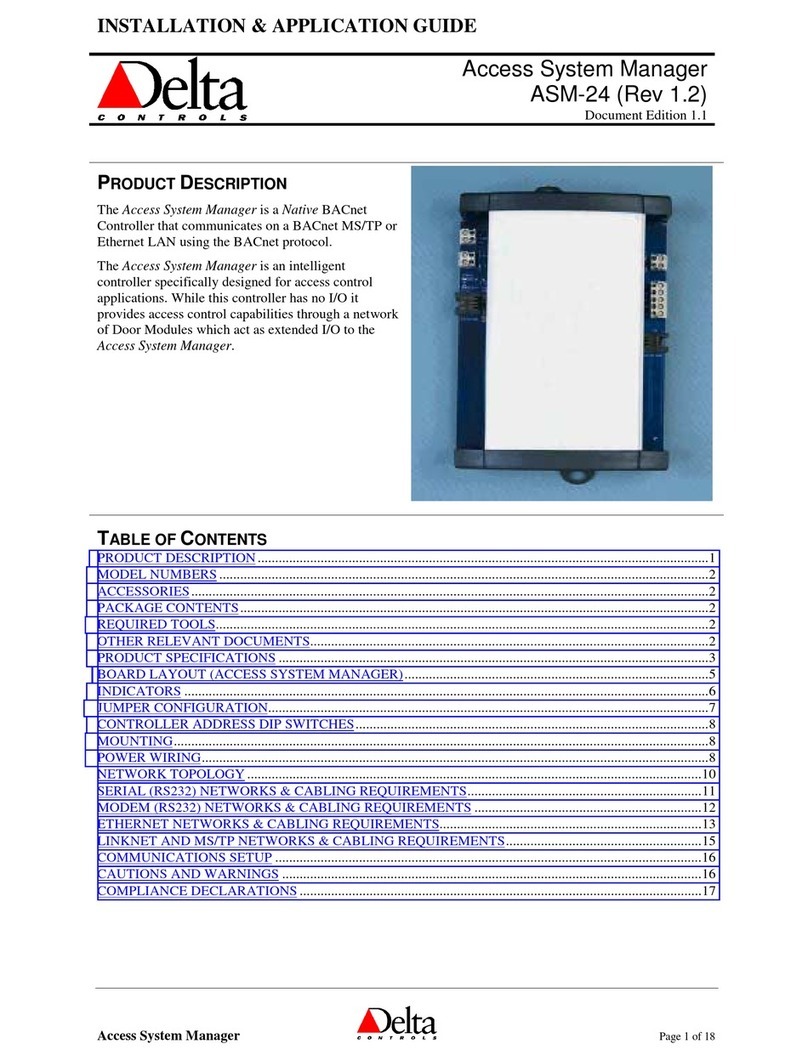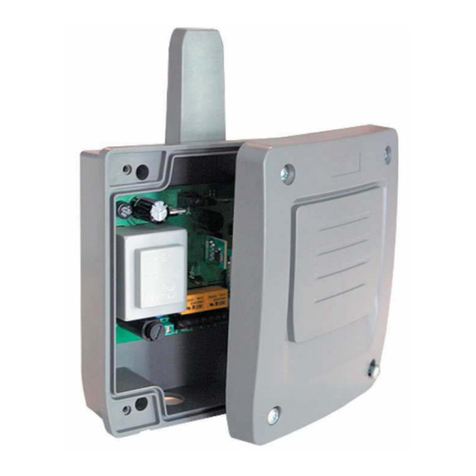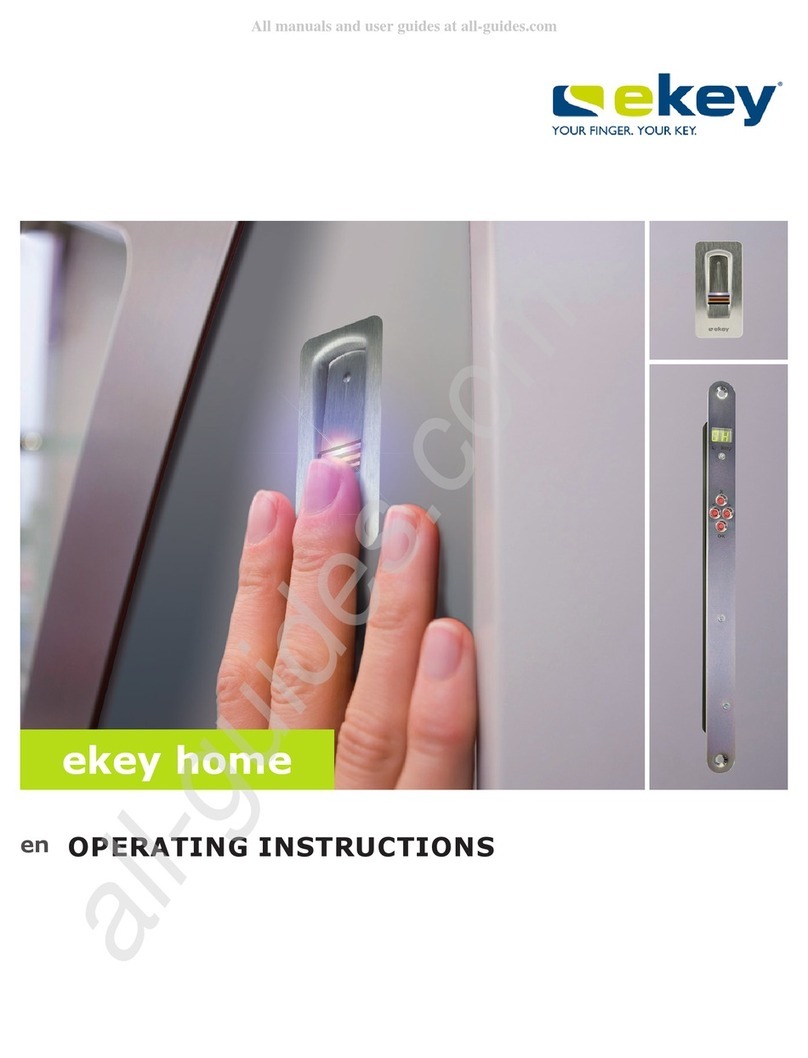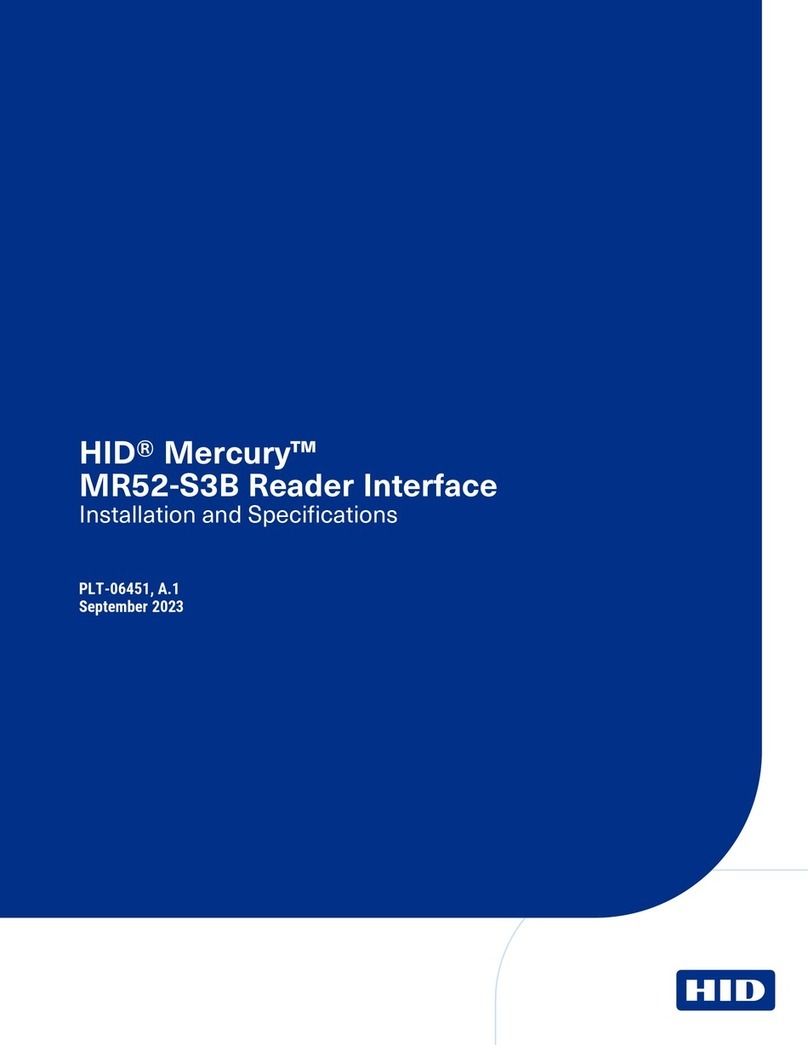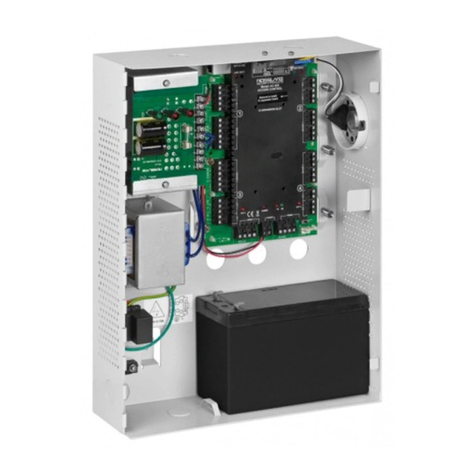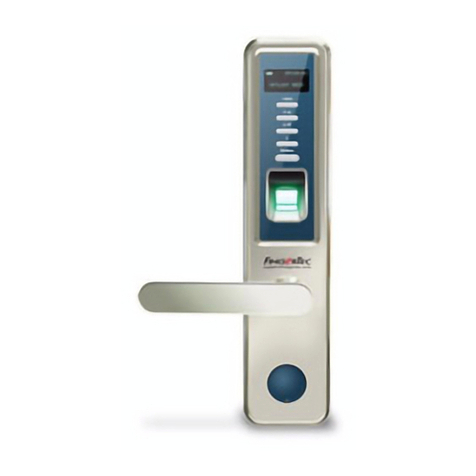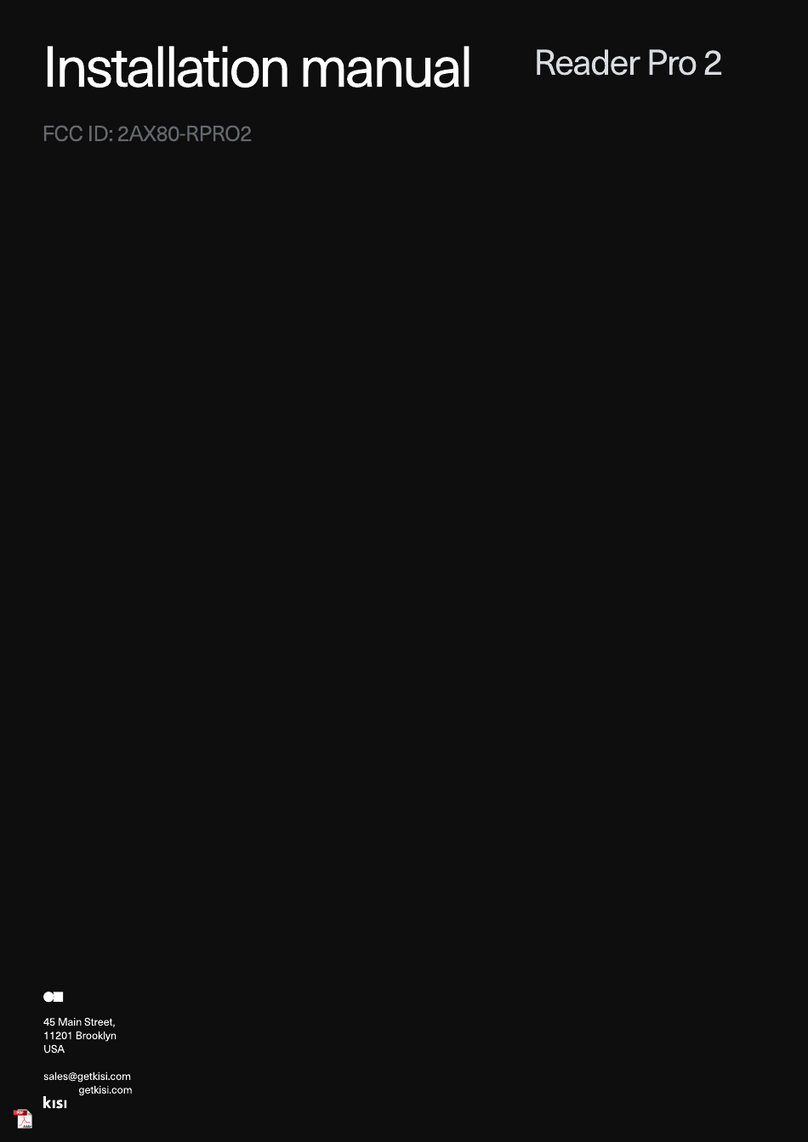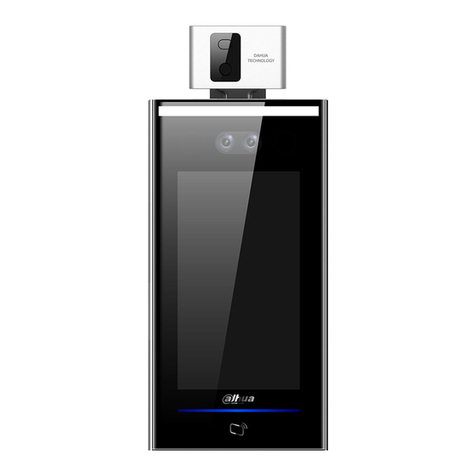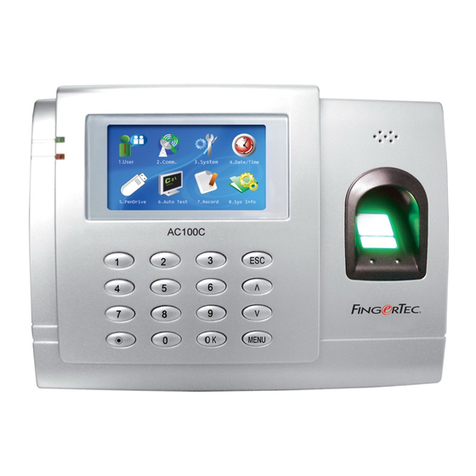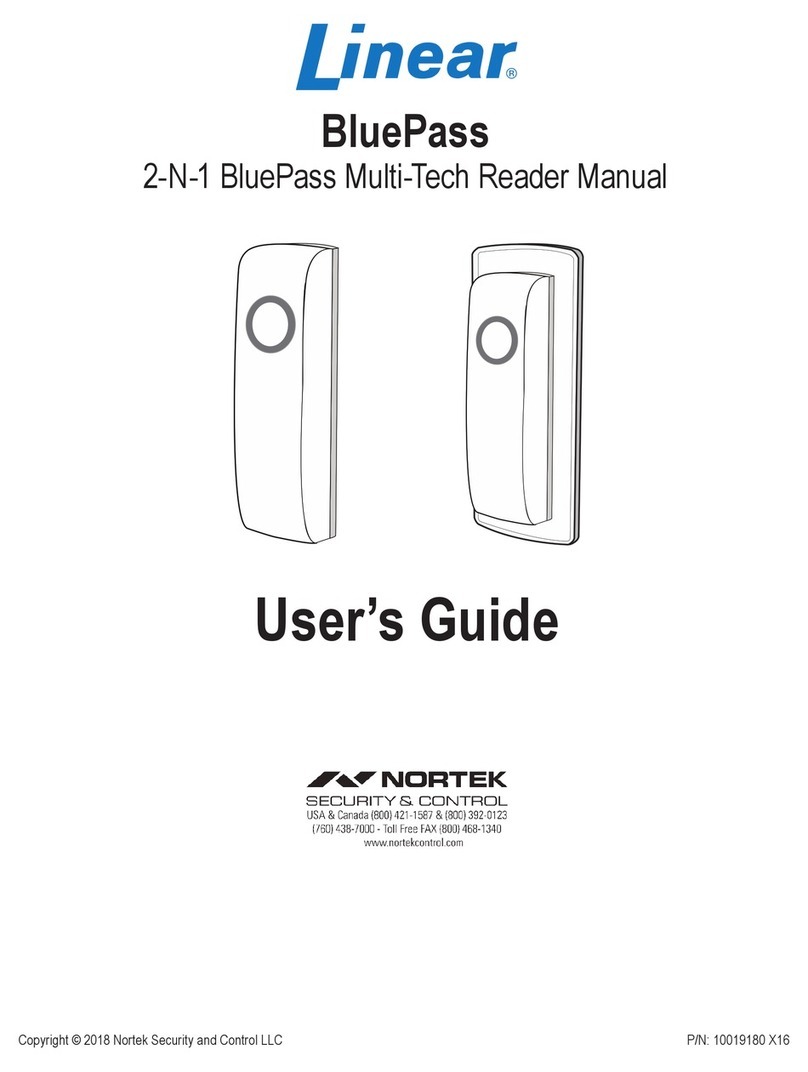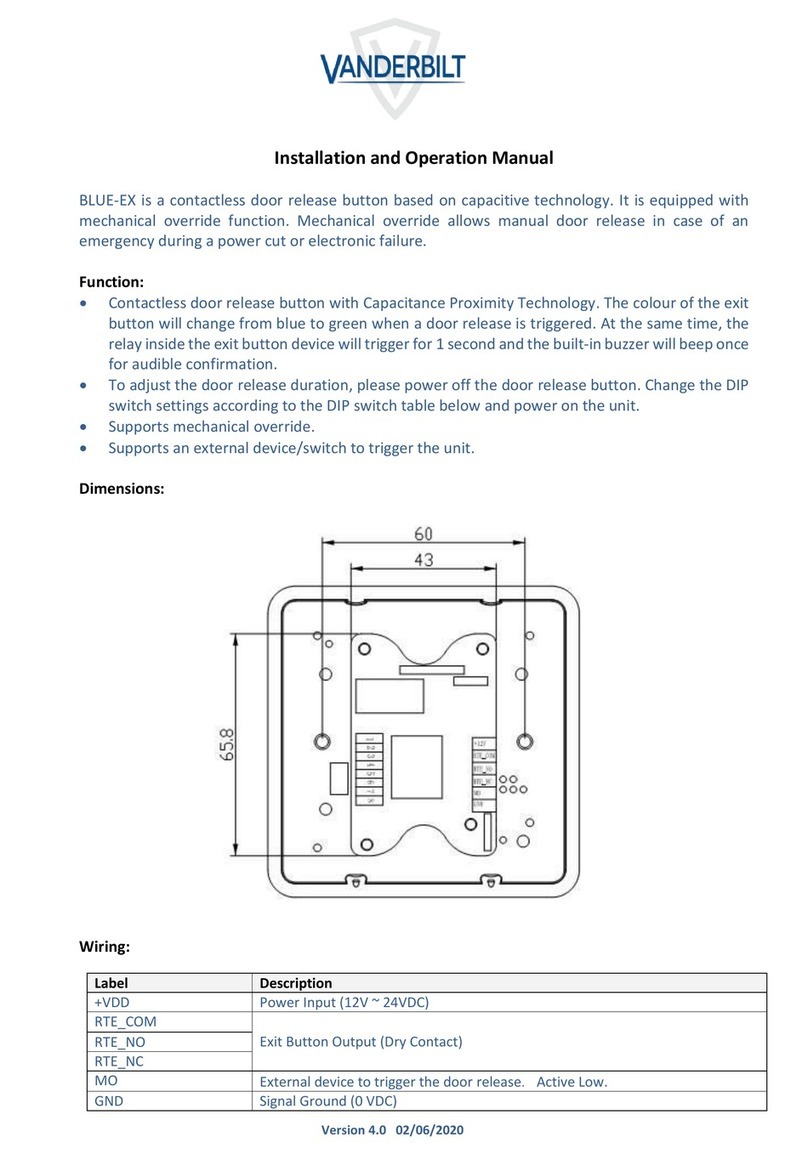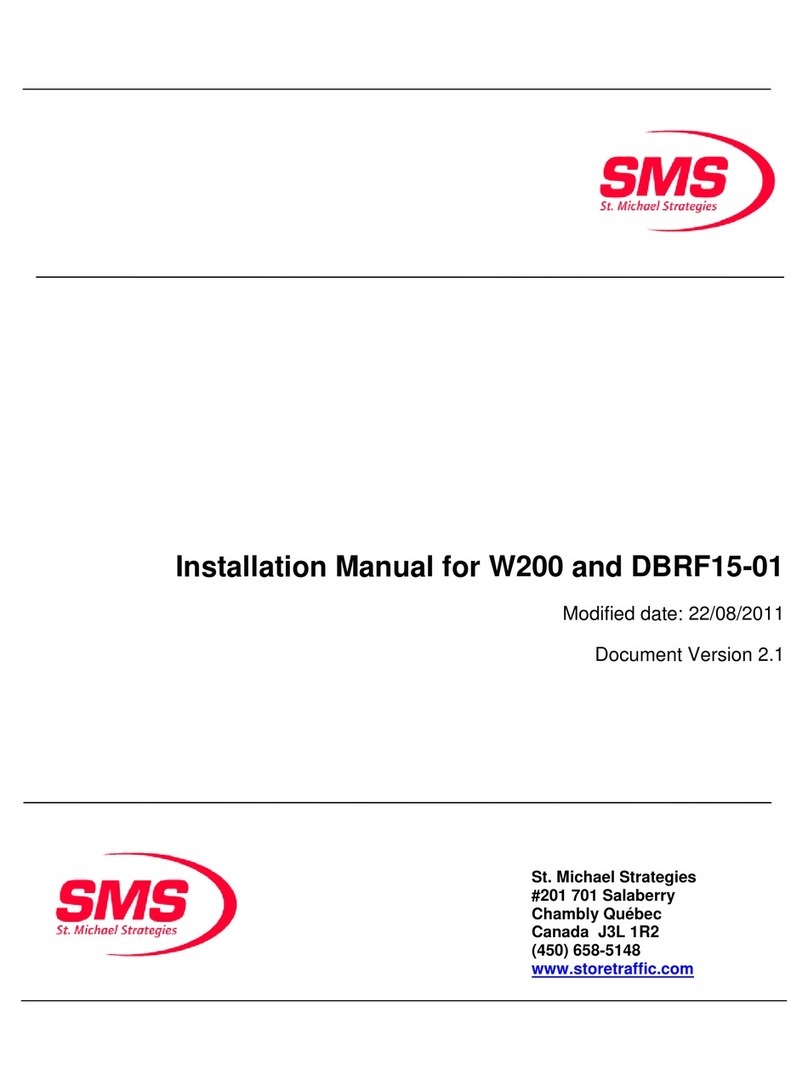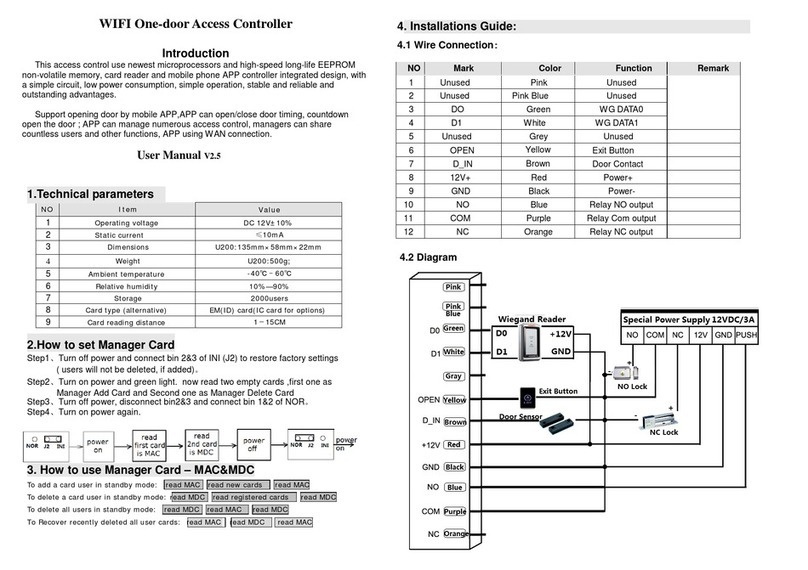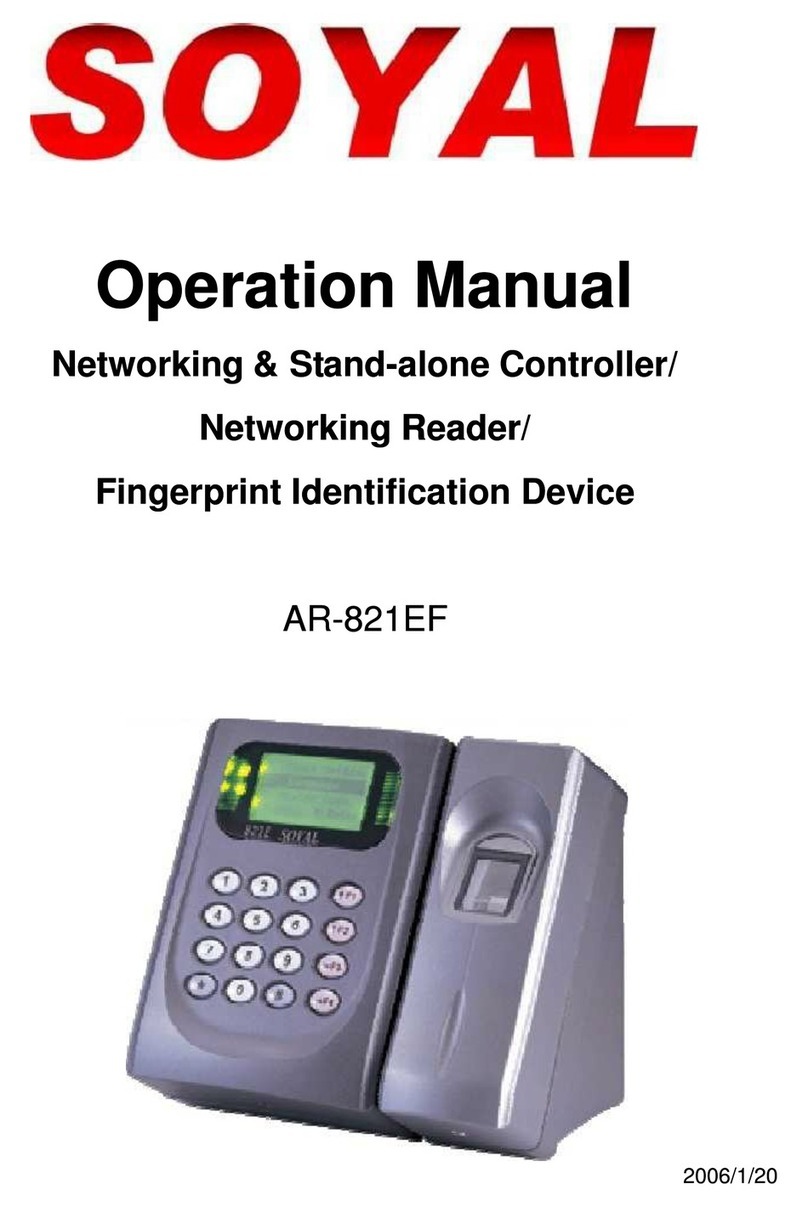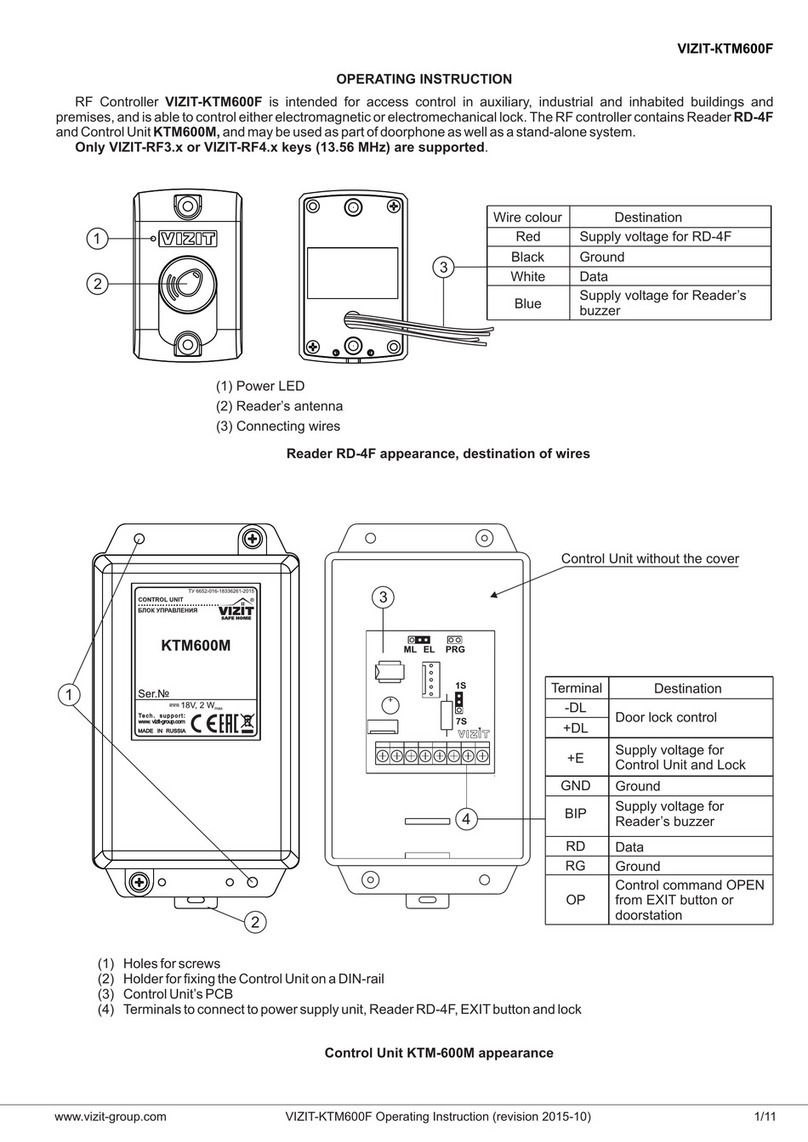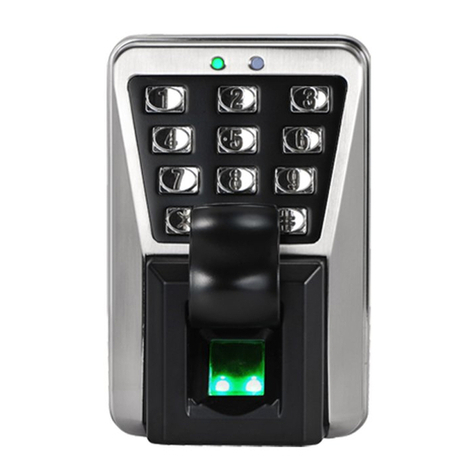Delta Controls HIR User manual

HIR Model
Installation, Operation and Maintenance Manual
Doc No.: 00-HIR
0
Revision: N6
Date:
16 October 2019
Approved:
LTK
Firmware Rev 3. 0N
Doc 00-HIR03 rev N8
Firmware 3.0N8
7 Jan 2022 LTK

2 of 15
MODEL HIR
HIGH TEMPERATURE INFRARED PYROMETER
1. THEORY OF OPERATION ........................................................................................................................................ 3
1.1 Considerations when using Infrared Pyrometry to measure Claus Thermal Reactor Temperature .... 3
2. INSTALLATION ......................................................................................................................................................... 4
2.1 Mounting the Hot Lens Assembly ......................................................................................................... 4
2.1.1 Steam Supply ................................................................................................................................ 4
2.1.2 Lens Purge .................................................................................................................................... 5
2.2 Thermal Insulation ................................................................................................................................ 5
2.3 Installing the Electronics Housing ......................................................................................................... 5
2.3.1 Remote Sensor Mounting – Option RS ........................................................................................ 6
2.3.2 Flameproof Installation.................................................................................................................. 7
2.4 Connecting the Fiber Optic Cable......................................................................................................... 8
2.5 Optical Alignment .................................................................................................................................. 9
3. OPERATION ............................................................................................................................................................ 10
3.1 Setup Parameters ............................................................................................................................... 10
3.2 Initial Startup ....................................................................................................................................... 11
3.3 Two Color Sensing .............................................................................................................................. 12
3.4 Preventive Maintenance ..................................................................................................................... 12
3.5 Calibration ........................................................................................................................................... 13
4. SPECIFICATIONS ................................................................................................................................................... 15

3 of 15
Reaction
gas
Infrared Energy
Lens
Assembly
Claus
Thermal
Reactor
Thermal
Insulation System
Rain
Shield
Isolation
Valve
Purge
Supply Steam
Supply
Steam
Outlet
Thermal
Insulation
System
Delta Controls Model HIR is an infrared temperature pyrometer specifically designed to measure the refractory
temperature of Claus Process thermal reactors.
1. THEORY OF OPERATION
Model HIR uses infrared pyrometry to measure temperature. All materials radiate energy as a function of their absolute
temperatures. Model HIR “looks” into the reactor and senses the amount and spectrum (wavelengths) of the infrared
energy being emitted by the hot face of the refractory. The sensed energy is converted into a signal, which can be used to
accurately display the refractory operating temperature.
1.1 Considerations when using Infrared Pyrometry in Claus Thermal Reactors
To effectively measure temperature, the instrument needs a clear, unobstructed view into the vessel. The infrared energy
must pass through the reacting gases without being absorbed by them. The instrument must “look” through those same
gases without seeing them or sensing their high temperatures. This is accomplished by using optical bandpass filters. The
selected sensing spectrums avoid errors due to absorption, reflection, etc.
A potential problem using infrared pyrometry in a Claus thermal reactor is that sulfur or other solids can accumulate on the
lens or in the nozzle which blocks the infrared radiation, and requires expensive maintenance to clean the lens and optical
path. Model HIR is designed to be nearly maintenance free. When properly installed and operated, it maintains the lens,
sighting window, and nozzle at a sufficiently high temperature to avoid sulfur buildup and reduces frequency of periodic
cleaning.
Figure 1

4 of 15
2. INSTALLATION
Figure 2 shows a typical installation. The HIR features a unique Steam Jacketed Lens Assembly that is mounted
directly to the isolation valve, which is mounted on the vessel nozzle flange. The Steam Jacketed Lens Assembly
is normally furnished in either a 2 inch or 3 inch flanged process connection size. Ensure the size and type flange
on the nozzle isolation valve matches the Steam Jacketed Lens Assembly mounting flange received. If the
connections do not match, contact Delta Controls to secure a unit with the necessary nozzle connection size and
type.
2.1 Mounting the Steam Jacketed Lens Assembly
While the unit is down, check the isolation valve mounted on the vessel to ensure it operates properly and
properly. Replace the valve if it appears to bind or if, there is any indication that it may leak. Close the valve (it will
be opened after the reactor reaches operating temperature of over +572 F (+300 C).
Bolt the flange of the Steam Jacketed Lens Assembly to the valve flange with the 1/8” NPT purge port at the top.
2.1.1 Steam Supply
Long-term reliability of this instrument requires the use of steam to maintain the temperature of the window and
nozzle above the melting point of sulfur. Failure to maintain a high enough temperature can allow sulfur to solidify
and build up on the window and nozzle surfaces, blocking the light and causing inaccurate temperature readings.
Connect the steam lines (in accordance with the best practices of your plant) to the upper (inlet) port and connect
a bucket type steam trap to the lower (outlet) port of the assembly. The standard steam port connections are
1/4” NPT. Insulating the steam lines is recommended, though not shown in Figure 1.
Clause
Thermal
Reactor
Steam Outlet
Fiber Optic Cable
Cable Tray Wiring Conduit
Electronics
Module
Wiring
Conduit
Figure 2 – Typica l Installation
(Thermal insulation not shown)
Purge Supply
Steam Supply
Isolation Valve

5 of 15
2.1.2 Lens Purge
A 60 SCFH (28 L/min) flow of purge gas to the Steam Jacketed Lens Assembly is required.
Ensure that the supply of purge gas is clean, oil free and dry. Any moisture or hydrocarbons in
this purge gas may cause the inside of the lens window to coat. A coating will prevent some of
the infrared energy from reaching the sensor, causing a low temperature reading to occur, and
window cleaning to be required. Use a flow meter with a needle control valve suitable for a
flow rate of approximately 10 SCFH to 90 SCFH air (0.5 L/min to 41.7 L/min). Connect the
purge gas supply to the 1/8” NPT fitting on the top of the Steam Jacketed Assembly. Regulate
the purge supply to 15 psig (1 bar). Delta Controls recommends using Model HFI Flush Gas
Station (Figure 3) as it provides a conveniently packaged assembly of the necessary purge
supply components. Connection of the Model HFI is shown in Figure 4.
2.2 Thermal Insulation
To prevent sulfur from plugging the optical path, it is important that a temperature above +250 F (+121 C) be
maintained on the nozzle, isolation valve, and Steam Jacketed Lens Assembly. In most cases, the heat from the
reactor and steam body are not sufficient to keep the temperature of the valve and lens assembly above this
temperature unless they are insulated. It is important, therefore, that insulation be installed around the nozzle,
valve, and lens assembly, as shown in Figure 1, in accordance with the best practices of your plant. Adequacy of
the insulation should be tested by verifying that the lens assembly flange and the isolation valve body are above
+250 F (+121 C) under the most unfavorable conditions (wind, rain, snow, etc.)
2.3 Installing the Electronics Housing
A mounting location must be provided nearby for the electronics module.
Choose a location that is protected from the heat of the reactor, such that
the maximum ambient temperature of the electronics is not exceeded. For
convenience in performing optical alignment, the electronics display
should be visible to an operator standing at the Steam Jacketed Lens
Assembly.
To Flush Gas Supply
Purge
Inlet
Model HFI
Flush Gas Station
(Rear View)
Model HIR Steam
Jacketed Assembly
To Steam Trap
To Steam Supply
Figure
4
Purge Connections
Figure 3
Model
HFI Flush
Gas
Station
½” NPT
6 in (150 mm)
Terminal
Block
Fiber
Optic Adapter
Figure
5
Fiber Optic Adapter

6 of 15
2.3.1 Remote Sensor Mounting – Option RS
Under some circumstances, it is impractical to mount the electronics close to the lens body. Extending the fiber
optic cable is not possible, due to losses that would occur in a longer fiber. However, it is possible to mount the
electronics housing farther from the lens body by mounting the fiber optic adapter (Figure 5) at the end of the
10 feet (3 meters) fiber optic cable, and extending the sensor wires back to the remotely mounted electronics
housing, as shown in Figure 6.
The following considerations should be observed when remotely mounting the fiber optic adapter:
The fiber optic adapter must be mounted in a location with an ambient temperature of 0 F to +185 F
(-18 C to +85 C).
The recommended maximum extension is 25 feet (7.6 meters).
Install twisted cable pair between the fiber optic adapter and the electronics housing. The twisted pair
MUST be run through metallic conduit. Note that F-range models use two twisted pairs (4 wires total).
Other models use a single twisted pair.
Do not install other wires in the same conduit with the sensor wires.
Conduit should be appropriate for the area classification. Seals should be installed near the electronics
housing, in accordance with governing code.
The loop wiring conduit connection on Model HIR is ¾” NPT. Unless the ‘RS’ (remote sensor) option is specified,
the fiber optic adapter is normally factory installed in the ½” NPT opening in the housing.
Wire the electronics module in accordance with local governing code.
A green external earthing screw is located near the threaded conduit entry. An internal green earthing screw is
also provided inside the housing. To connect to the internal earthing screw, you must first move the electronics
module by removing the two screws holding the module down. Replace the module and hold-down screws after
connecting the earth ground conductor.
Note: If, for any reason, the fiber optic adapter must be unscrewed from the
electronics housing, first make sure the fiber optic adapter sensor wires are
disconnected from the electronics module terminals.
Model HIR
Electronics
Housing
Conduit Seal*
* Provided by user
Conduit Outlet Body
½” NPT
ex Conduit*
Fiber Optic Adapter
½” NPT
Fiber Optic Cable
Figure 6 Typical Installation of Remote Fiber Optic Adapter

7 of 15
2.3.2 Flameproof Installation
When type ‘d’ flameproof protection is employed, wire the HIR as shown in Figure 7 or Figure 8. Use certified
cable glands and conduit seals for all flameproof installations.
Figure 7
Typical Wiring
Note: F-range shown; other ranges use a two-wire fiber optic adapter
Figure 8 Typical Wiring - Option RS (Remote Sensor)
Note: F-range shown; other ranges use a two-wire fiber optic adapter

8 of 15
2.4 Connecting the Fiber Optic Cable
Use care in handling the fiber optic cable. Even though it is armored, sheathed, and sealed for durability,
individual glass fibers within the cable can be damaged by mishandling. Avoid dropping, shocking, kinking,
pulling, or sharply bending the cable. When routing the fiber optic cable, it is important to observe the
minimum bend radius specification of 3 inches (7.6 cm). Bending the fiber optic cable more sharply than
specified radius can result in low temperature readings due to excessive infrared energy losses in the cable.
The fiber optic cable is connected to a sensor in the fiber optic adapter as shown in Figure 9.
1. Insert the cable into the fiber optic adapter. The cable must be inserted all the way to the bottom of the
adapter hole for the cable grip to seat and to avoid calibration errors.
2. Tighten the cable grip to seal the cable against moisture.
Model HIR Electronics
Housing
2. Tighten cable grip
1. Insert cable
Note: Do not unscrew this ½” NPT
connection without first
disconnecting the sensor wires.
Otherwise, damage to internal
wiring could result.
¾” NPT
Conduit
Connection
Figure 9
– Inserting the Fiber Optic Cable

9 of 15
2.5 Optical Alignment
The fiber optic lens is aligned at the factory to look straight down the nozzle’s bore. The alignment should be
visually checked prior to using the instrument. This alignment check is only possible when there is light inside the
reactor vessel, either with the vessel opened and lighted prior to operation, or from the light from the reaction after
startup.
To view the optical path:
1. Unscrew the lens cover quick disconnect and remove the lens top cover as shown in Figure 10. Be
careful not to allow the weight of the cover to damage the fiber optic cable.
2. Open the isolation valve.
3. Sight down the Alignment Tube, through the process window and into the reaction chamber.
The light from the reaction vessel should appear centered in
the Alignment Tube. If it is not, the Alignment Tube should
be aligned as follows:
4. Loosen the three alignment clamp screws using a
9/64” hex wrench (Figure 11).
5. Manually adjust alignment tube until light is
centered.
6. Tighten the three alignment clamp screws.
7. Re-check the alignment to make sure the alignment
tube did not move while tightening the clamp
screws.
8. Replace the Lens Top Cover, making sure that the
Lens Body is inserted into the Alignment Tube, and
tighten the Lens Cover Quick Disconnect.
Lens
Top
Cover
Lens Body
Alignment Tube
Figure
10
Lens Cover Quick Disconnect
Alignment
Clamp
Screws (3)
Figure 11
Alignment
Tube

10 of 15
3. OPERATION
Caution: When used with type ‘d’ flameproof protection, do not open cover when
circuits are energized nor when hazardous gasses might be present.
Model HIR user interface consists of an LCD display and 4 setup pushbuttons. The temperature characteristics of
the display are such that you should only calibrate the unit when the ambient temperature is between 0 F and
+140 F (-18 C through +60 C). Outside this temperature range, the transmitter will operate properly, but the
display may be difficult to read.
Pushbuttons:
Pressing the UP button causes the value displayed to be incremented. Holding the button down causes
the value to continue upward at an ever-increasing rate.
Pressing the DOWN button causes the value displayed to be decremented. Holding the button down
causes the value to continue downward at an ever-increasing rate.
NEXT Pressing this button shifts the display to the next setup parameter.
SAVE Pressing the SAVE button saves all calibration values and setup parameters. The display will indicate
"Saving..." to verify that the values are being saved.
3.1 Setup Parameters
IR Temp This parameter displays the temperature as measured by the infrared sensor. When
displaying this parameter, the signal strength is also displayed. (Refer to section 3.4
Preventative Maintenance: Signal Strength.)
LOOP mA Loop current transmitted in milliamperes
LOOP % Loop current as a percentage where 0 % = 4 mA and 100 % = 20 mA
Units This parameter sets the units of measure for temperatures. Use the up or down arrows to
toggle between degrees Fahrenheit and Celsius.
4mA = Zero scale temperature, i.e., the temperature corresponding to 4.00mA loop current.
20mA Full scale temperature, i.e., the temperature corresponding to 20.00 mA loop current.
Lo Alarm Low alarm setpoint – If the measured temperature falls below this setpoint, the Low Alarm
bit will be set in the HART Device Status and an exclamation (!) will appear next to the
displayed temperature.
Hi Alarm Hi alarm setpoint – If the measured temperature rises above this setpoint, the High Alarm
bit will be set in the HART Device Status and an exclamation (!) will appear next to the
displayed temperature.
Sig Alarm Signal level alarm setpoint – If optical occlusions cause the amount of light reaching the
sensor to fall below this level the Signal Alarm bit will be set in the HART Device Status
and ‘LOW!” will appear in the signal display field when displaying the IR TEMP parameter.
Enter a number between 0 and 100 where 0 means light is completely blocked. 100
means no blockage. Typical values would be 50 to 70.

11 of 15
The parameters listed below are normally used only during factory setup. However, they can be
accessed by pressing and holding the NEXT button while simultaneously pressing the UP arrow button.
CAUTION: Accessing these parameters can result in at least momentary
disruption of the transmitted 4-20 mA signal as described below under
Zero Adj and Span Adj.
Version Software/Hardware Revision number
Cal Temp Calibration Temperature
LowCutoff Temperature below which the unit will not read.
HART
ADDR
When using HART in multidrop mode, this parameter sets the HART address on the bus.
LOOP CTL 0 = normal (current follows temperature); 1 = multidrop (loop set to 4.00 mA); 2 = manual.
When set to 2 (manual), current can be set by changing the LOOP mA parameter above.
Note: LOOP CNTRL = 2 is used for testing purposes only and reverts to 0 on
device reset or cycling power.
Zero Adj When accessed, current loop immediately transmits 0 scale or 4 mA. Adjust parameter up
or down until device measuring the output current indicates exactly 4.00 mA.
CAUTION: Accessing this parameter causes the temperature measurement to STOP
transmitting and instead transmits Zero Scale. Be sure that any equipment
connected to this transmitter is prepared for the disruption in the temperature
signal level before accessing this parameter.
Span Adj When accessed, instrument immediately transmits full scale or 20 mA. Adjust parameter
up or down until the device measuring the output current indicates exactly 20.00 mA.
CAUTION: Accessing this parameter will cause the transmitter to transmit Full
Scale Temperature. Be sure that any equipment connected to this
transmitter is prepared for the disruption in the temperature signal level
before accessing this parameter.
ALRM
ACTN
Alarm Action – This controls how current loop responds to a detected diagnostic alarm.
0 = drive high (22.0 mA); 1 = drive low (3.6 mA); 2 = hold; 3 = ignore.
NOTE: This alarm action is based only on internal consistency checks that are
used to detect hardware failures. If a diagnostic alarm is detected, check the
wiring between the fiber optic adapter and the electronics module and/or consult
the factory. The alarm action can be tested by disconnecting the red or green
wire to the fiber optic adapter while the pyrometer is looking at a hot reactor or
other incandescent light source.
DAMPING The measurement time constant in seconds. Higher numbers provide more smoothing.
MemCmd Factory Use Only
3.2 Initial Startup
1. Confirm the nozzle isolation valve is closed. This prevents any foreign matter from collecting on the
viewport window during refractory dry out, curing and hydrocarbon firing.
2. Establish steam flow to the Steam Jacketed Assembly and ensure that the steam trap is functioning
properly. This assures that condensation will not accumulate on the viewport.
3. After verifying that the Steam Jacketed Lens Assembly is up to temperature, open the isolation valve.
Note: It is important to keep the isolation valve closed until operating temperature is
reached in order to prevent sulfur from condensing and solidifying on the window.

12 of 15
4. Turn purge gas pressure on and set the purge flow meter needle control valve to approximately 60 SCFH
(28 L/min).
5. Apply power to the electronics module. “IR Temp” value will be displayed.
6. Press the NEXT button to display the “Units” parameter.
7. Press the UP or Down arrow buttons to toggle between Celsius or Fahrenheit and set as desired.
8. Press the NEXT button to display the “4mA=” parameter.
9. Press the UP or DOWN arrow buttons to set the temperature corresponding to 4.00 mA loop current.
10. Press the NEXT button to display the “20mA=” parameter.
11. Press the UP or DOWN arrow buttons to set the temperature corresponding to 20.00 mA loop current.
12. Press the SAVE button to save all changes. The display will briefly indicate “Saving…”
Note: If you do not press SAVE, the changes you made above will not be
remembered after a power fail.
13. Press the NEXT button to display the temperature.
3.3 Ratiometric Two-Wavelength Sensing
The HIR ‘F range’ transmitter measures the intensity of light at two different wavelengths to determine the
temperature. This allows the measurement to be accurate even if there is a partial blockage of light due to
material buildup (occlusion) on the window or in the nozzle. In essence, the measurement is based on the light’s
color (wavelength), instead of the intensity, as is usually done with a single wavelength measurement. In addition
to the temperature, the amount of occlusion can also be measured as a Signal Value number from 0 (completely
blocked) and 100 (no blockage). The Signal Value appears on the display in small numbers below the
temperature. If the number falls below the Signal Alarm setpoint, then “LOW!” appears next to the displayed
signal level, and HART Additional Device Status Byte 1, bit 2 is set.
Note that below 1472 °F (800 °C), there is not enough infrared light at both wavelengths to make a two-
wavelength measurement. Therefore, temperatures between 662 °F and 1472 °F (350 °C and 800 °C) are only
measured with a single wavelength. In that case, the amount of blockage cannot be determined.
3.4 Preventive Maintenance
Model HIR is designed to give years of trouble-free operation without the need for service. In most cases, to
achieve this performance, the only requirement is that the optical path (nozzle, valve, window) temperature be
maintained above the freezing point of sulfur, and that the window purge be maintained to keep the window free
of particulates. Thus, a preventive maintenance schedule should include periodic inspections to verify that:
1. The steam supply is on, the steam trap is functioning, and steam is heating the lens body,
2. The lens purge flows at the recommended rate of 60 SCFH (28 L/min), and
3. The thermal insulation as shown in Figure 1 is in place and in good condition.
Signal Strength Indication
Signal strength measurement (Signal=XXX.XX) is located beneath the temperature measurement when
displaying the temperature parameter. This value should read between 0 and 100 and indicates the amount of
light reaching the sensor relative to an unobstructed sight path. A value of ≥ 95 is normal. Values below 95 may
indicate the occurrence of sight path attenuation, possibly due to material build-up on window or inside the nozzle.
The signal strength should be monitored periodically. If it drops significantly or if the optical path temperature or
purge is suspected to be compromised, corrective action should be scheduled. This includes inspecting the

13 of 15
optical sight path and performing any necessary sight glass or lens cleaning and / or nozzle cleanout. Refer to
section 2.5 Optical Alignment for details.
3.5 Calibration
Calibration should be checked any time an anomaly is suspected or annually. The best way to check the
calibration or to recalibrate the instrument is with a CLAUSTEMP® Model HIP Handheld Pyrometer. See
www.claustemp.com.
To calibrate the HIR Pyrometer:
1. Measure reactor temperature using a CLAUSTEMP® model HIP handheld pyrometer or other means.
2. Ensure Model HIR has a clear sight path into the reactor.
3. Press and hold the NEXT button while simultaneously pressing the UP arrow button. Then release both
buttons.
4. Press the NEXT button to display the CAL TEMP parameter.
5. Unlock the calibration feature by pressing and holding the NEXT button while simultaneously, pressing
the DOWN arrow button. Then release both buttons.
6. Use the UP and Down arrow buttons to set the known reactor temperature.
7. Press the SAVE button. Calibration is complete.
00-
HIR05
Fiber Optic Cable
3” Minimum Bend Radius
Figure
12
-
Dimensions
–
Steam Jacketed Lens Assembly
Units: [mm]
inches

14 of 15
Figure 13 - Dimensions – Electronics Housing

4. SPECIFICATIONS
Range:
“C” Range +1472 °F to +3092 °F (+800 °C to +1700 °C)
“D” Range +662 °F to +3092 °F (+350 °C to +1700 °C)
“F” Range
Dual Wavelength
Single Wavelength
+1472 °F to +3092 °F (+800 °C to +1700 °C)
+662 °F to +3092 °F (+350 °C to +1700 °C)
Accuracy 0.5 % of reading or 36 F (±20 C), whichever is greater
Repeatability 0.1 % of full-scale span
Warm-Up Time 60 seconds
Readout High Contrast LCD Display
Output Signal: 4-20 mADC, 2-wire loop-powered
Hazardous Location Rating II 2 G Ex d IIC T6 (When installed per section 2.3.1 Remote Sensor
Mounting — Option RS.)
IP65
Fiber Optic Cable: Flexible PTFE over SS armor
10 feet (3 meters) standard length
Minimum Bend Radius 3 inches (7.6 cm)
Hot Lens Mounting 3” ANSI is standard on a flanged nozzle steam jacketed.
Other types and sizes available
Ports:
Steam Jacket in and out 50 psi to 100 psi (344 kPa to 689 kPa) for steam to heat the lens
assembly
Nitrogen Purge 60 SCFH (28 L/min) typical
Housing Mounting Vertical surface or 2-20 pipe stand with vertical or horizontal
orientation
Housing Conduit Connection ¾” NPT
Ambient Temperature Limits:
Fiber Optics & Lens -20 F to +400 F (-29 C to +204 C)
Fiber Optics Adapter -4 F to +185 F (-20 C to 85 C)
Electronics -4 F to +158 F (-20 C to +70 C)
Maximum Process Pressure 150 psi (1034 kPa)
585 Fortson Street
Shreveport, LA 71107
www.claustemp.com
delta@deltacnt.com
Table of contents
Other Delta Controls IP Access Controllers manuals


